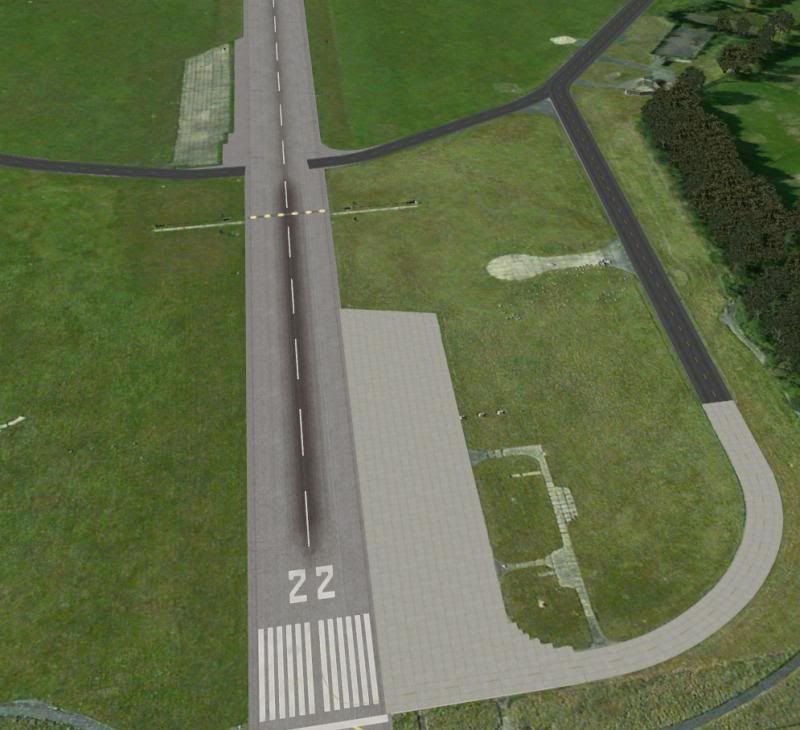- Messages
- 158
- Country

I've been trying out the new GP features in ADE1.6 and already I can see some really useful benefits, particularly with apron light splashes at night. I've included a screen shot that shows an over-sized ground polygon to illustrate a couple of points:

1. When I use a GP at layer 10, it covers any underlying runways, conventional taxiways and polygons. However a GP line used as a taxiway and layered higher stays above the grass. Is there any way please to force the custom grass under all the hard surfaces?
2. When I draw a taxiway with a GP line, the yellow dotted centre line is fine, but I don't get the option to orientate the Backing Texture so that joins in concrete slabs run at right angles to the taxiway edge. I can do this if I draw the taxiway as a polygon but then it's difficult to keep opposite edges parallel. Am I missing something here please?
The GP grass hides taxiway lighting. I saw the topic in the GP thread about cutting holes or using effects files, but it's a major downside to using this way of making grass. Is that something that could be overcome in a future development please?
I'm really wondering if this is the best way to make custom airfield grass and taxiways. Any advice would be appreciated.
John

1. When I use a GP at layer 10, it covers any underlying runways, conventional taxiways and polygons. However a GP line used as a taxiway and layered higher stays above the grass. Is there any way please to force the custom grass under all the hard surfaces?
2. When I draw a taxiway with a GP line, the yellow dotted centre line is fine, but I don't get the option to orientate the Backing Texture so that joins in concrete slabs run at right angles to the taxiway edge. I can do this if I draw the taxiway as a polygon but then it's difficult to keep opposite edges parallel. Am I missing something here please?
The GP grass hides taxiway lighting. I saw the topic in the GP thread about cutting holes or using effects files, but it's a major downside to using this way of making grass. Is that something that could be overcome in a future development please?
I'm really wondering if this is the best way to make custom airfield grass and taxiways. Any advice would be appreciated.
John












